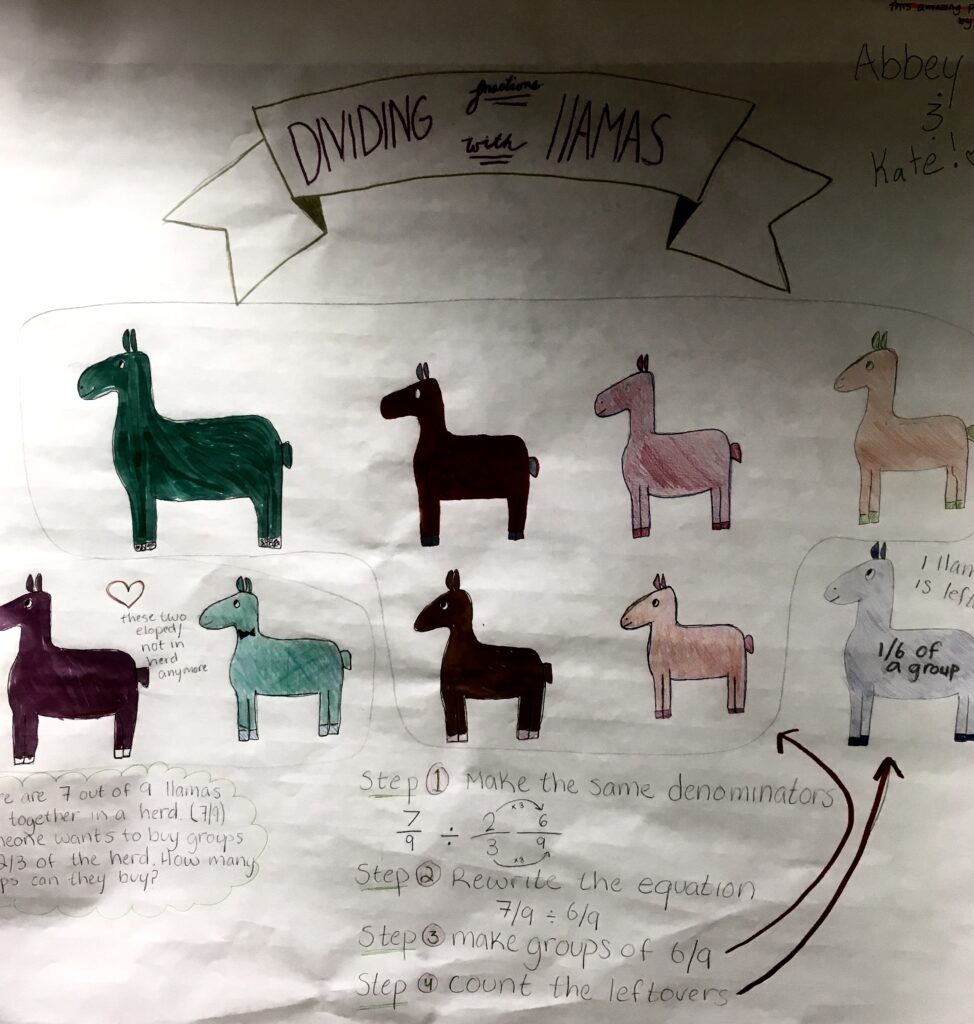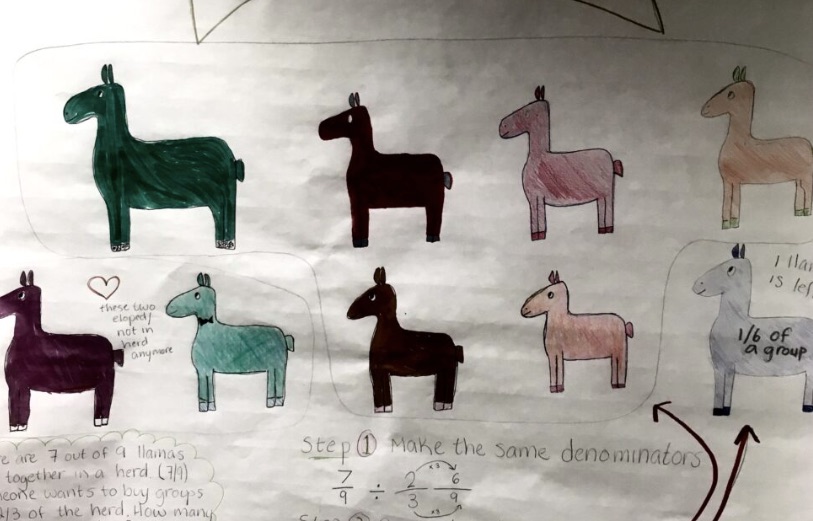Tasha Grey’s Learning Lab Reflection:
As much as I love division with fractions, and think it makes perfect sense, no matter how much time we spend and how many different approaches I take, student understanding is always incredibly fragile. Like baby hummingbird fragile.
Taking the advice of a cohort member, instead of pulling out my hair after several weeks of modeling and connecting different mathematical representations as explicitly as I could, only to find that the majority of students could barely hold onto their understanding from one day to the next, I put the learning in their hands. Really in their hands. I assigned each student a teammate and a specific fraction problem. Their job was to create a teaching tool that would allow anyone to learn how to solve problems similar to one that had been assigned.
Cue student groaning. “Ms. Grey, I don’t even know how to solve this problem!” “Why can’t you just teach them?” and many more comments I pretended not to hear. I provided them with an explicit checklist, a list of resources to help them understand how to solve the problem themselves and whatever technology they needed.
Completing this project was not a straight line for most students. First, they had to understand what they knew and didn’t know about solving their problem. Then they had to try to explain it. Next, they had to admit that they either knew way less than they were letting on, or quite a bit more. Finally, they had to come up with a product that wasn’t just fun and funny, but something that someone could actually use to learn.
I collected all of their finished products on a Padlet site, then set them up to use each others’ products to study for a summative assessment.
Even after feedback from me throughout the process of creating these products, some students didn’t create a usable learning tool despite knowing the material themselves. However, when a peer would complain that they needed to know how to complete the problem, and that the poster/video/slideshow wasn’t helpful, suddenly there was a rush to edit.
This project was no magic wand that made all of my students hit the targets. However, it did help a lot of students take more ownership over their learning, forcing them to come to terms with the fact that they didn’t know the material, and they needed to, and that they had the power to learn it themselves. Not the brightest spot, but also not a complete bellyflop. If nothing else, I got to see llamas incorporated into fraction division.

How can I get students to use these resources during our work times to engage in the learn, assess and relearn cycle? There seems to be a chronic desire for me to spoon-feed them information.
Bright Spots:
- Students were forced to confront the fact that they may not know this material as well as they thought
- Students had the chance to work collaboratively with partners working at the same level of understanding, as well as those with a different level of understanding
- Students saw how the quality of their work mattered- it could affect others’ learning as well as their own
- Students had to actually use their resources (online resources, anchor charts, notes, peers and teachers) to learn deeply
- Many students had fun- writing and solving problems about their interests, working creatively, and working on their own time frame
- Some students really learned the material (FINALLY!)
Belly Flops:
- Some students needed an adult with them throughout the project to stay on task and to maintain accuracy in their work
- The project was clunky- it needed a lot of adult management throughout, and didn’t always result in accurate or helpful end products
- It took a lot of time
- Classic group work problem: It was difficult to maintain the intended collaborative nature of the project, as some students fell into the trap of trying to ride on the coattails of others
- Technology easily became a big distraction for some students
Questions Moving Forward:
- How do I consistently provide opportunities like this (where students can continue to work on a topic we have already studied, creating a product that is meaningful to them that shows their increased knowledge- all while continuing to move forward in our learning?)
- How can I make sure that ALL students are doing the work of learning and creating, while still having them work in groups?
- How can I help students independently recognize what they know and don’t know, and more importantly, foster a sense of agency which drives them to use our available resources to do the learning?


